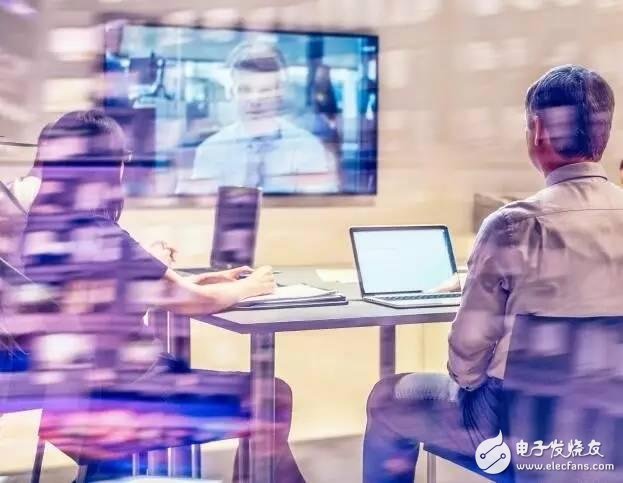The Internet of Things has changed people's lives. Enterprises are also actively responding to the opportunities and challenges that come with the Internet of Things. Standards can help companies sort out and solve complex problems. The Internet of Things (IoT) will greatly change the future industrial structure, work life and production system, and will also affect the interaction between government, business and society, so it is called the "third industrial revolution." In fact, the revolution has begun. So, what changes have taken place now, and how does the enterprise model evolve? The magazine interviewed David Welsh of Microsoft's Corporate Standards Department on the subject of standards and the Internet of Things. In this article, he describes the opportunities and challenges brought about by the Internet of Things, the role of standards and how companies can promote the development of Industry 4.0. ISOfocus: Everyone is very excited about the arrival of the Internet of Things, but what are the potential obstacles in practical applications? David Welsh: The Internet of Things brings new services, innovative business models, and ways to leverage data to drive growth from maintenance forecasting to consumer experience upgrades. However, a recent report by the World Economic Forum shows that one of the major obstacles to making it difficult for companies to use the Internet of Things is the lack of interoperability or standards, leading to a significant increase in complexity and cost. Microsoft is committed to advancing the development of IoT standards and interoperability by joining multiple national and international IoT standards organizations and groups. Standards help ensure interoperability of packaged processes and equipment, which has been linked to decades of investment by many companies. ISOfocus: What are the other challenges companies face in the process of entering the Internet of Things? David Welsh: Interoperability is one of the difficulties. As for the concerns of global companies, as more and more companies tap into new business values ​​through the interconnection of existing equipment and assets, security issues are becoming more prominent. Microsoft believes that the IoT standard should address many key issues, including information physics security, "needs terms", globally relevant IoT standards, and whether it fits into other countries' IoT strategies and international trade commitments. In the foreseeable future, the network of "things" will reach a new high. According to Gartner, the world's most authoritative IT research and consulting firm, the number of connected "things" will reach 6.4 billion this year. In 2020, this number will exceed 20 billion. The proliferation of connected devices and assets has also heightened concerns about the security of the Internet of Things. The focus of traditional information technology security is software and data protection, and the security of the Internet of Things needs to be extended to software and hardware, commonly known as physical security of information. IoT security solutions must ensure reliable device configuration, stable connectivity between devices and the cloud, and cloud data protection for information processing and storage. ISOfocus: What is the relationship between standardization and the Internet of Things? How should the new Internet of Things standards be formulated? David Welsh: Developing open, voluntary, and harmonized global standards is the main driver for the development of a strong and competitive IoT market. Standards are especially important for the Internet of Things because standards provide the foundation for interoperability, and we need interoperability to ensure efficient collaboration between new IoT systems and traditional technology systems. Collaboration with industry is key to developing new IoT standards. The openness and interoperability between hardware, software, and services will help governments and businesses change their past operating models. The standards of the Internet of Things must reflect the fact that the Internet of Things relies on the integration of traditional information technology (IT) and conventional operating technology (OT). Therefore, the standards body should develop (if necessary) and adopt (if existing) IT/OT coordinated IoT reference models, architectures, and open interfaces. For example, smart manufacturing needs to revise existing standards to fully promote the development of advanced industrial technologies, especially in information physics security, cloud-based manufacturing services, supply chain integration, and data analysis. Today, we must consider the many existing standards to drive the transformation of smart manufacturing business opportunities: ISO/IEC 27000 information security standards, ISO/IEC 28000 supply chain security standards, and IEC 62433 industrial control systems and automation standards. Industry Control Circuit Board
Industry control printed circuit boards (PCB)
1. For industrial control, special or general-purpose circuit board, the bottom circuit is completed, and IO is reserved. After buying the industrial control circuit board, the input and output ports reserved on the circuit board are connected to the user's own device, such as motor, solenoid valves, sensors, thus completing the function want to accomplish. Industry Control Pcb,Electronic Control Board,Industrial Controller Circuit Board,Industrial Control Printed Circuit Board Chuangying Electronics Co.,Ltd , https://www.cwpcb.com
2. The special circuit board is a board specially designed for a certain function, such as the temperature control circuit board. After buying it, the input port is connected to the thermocouple, and the output port is connected with a heating contactor or a solid state relay to control the heating device to complete the temperature control. There are flow control boards, motion control boards, etc.
3. The universal control board, most of which can be programmed, after the user's own secondary development, completes a specific function, and has a wide range of uses. For example, plc is a general industrial control board. After the user writes the program and compiles the input, various functions can be completed. Digital input, analog input port, high-speed counter port, digital output port, analog output port, and some also have communication function.